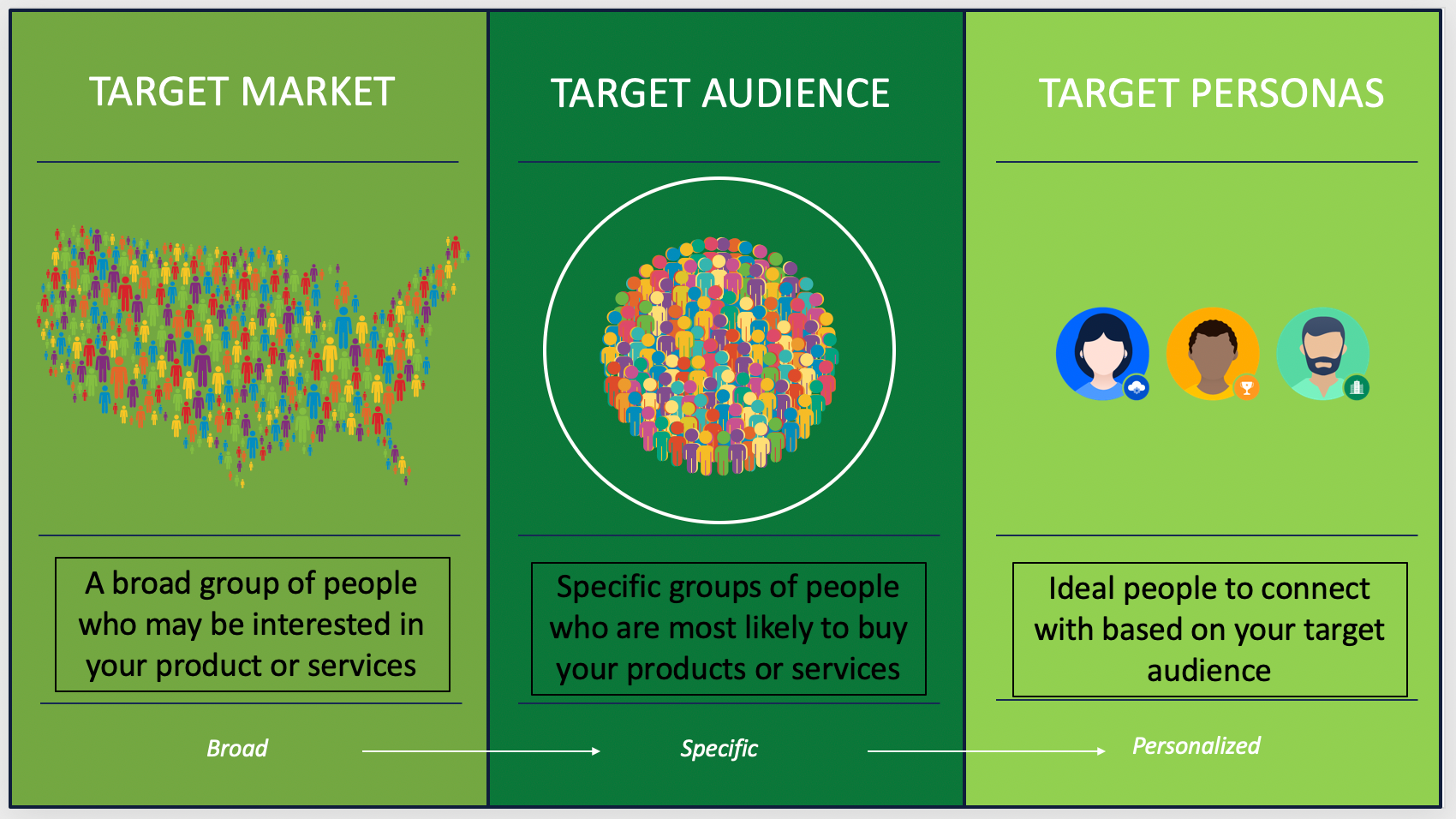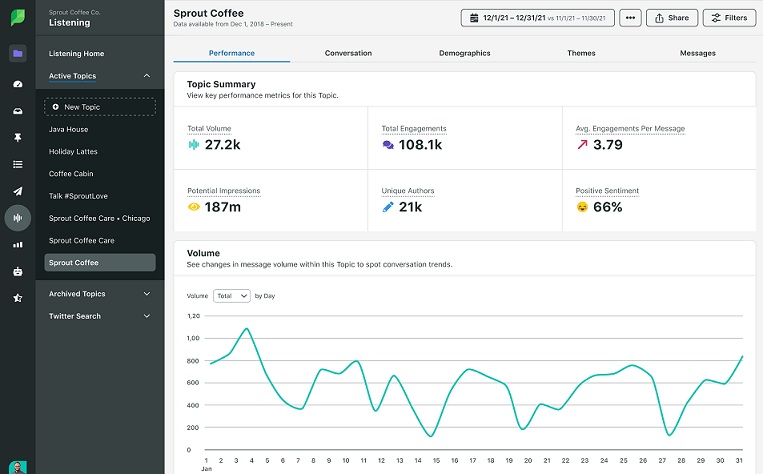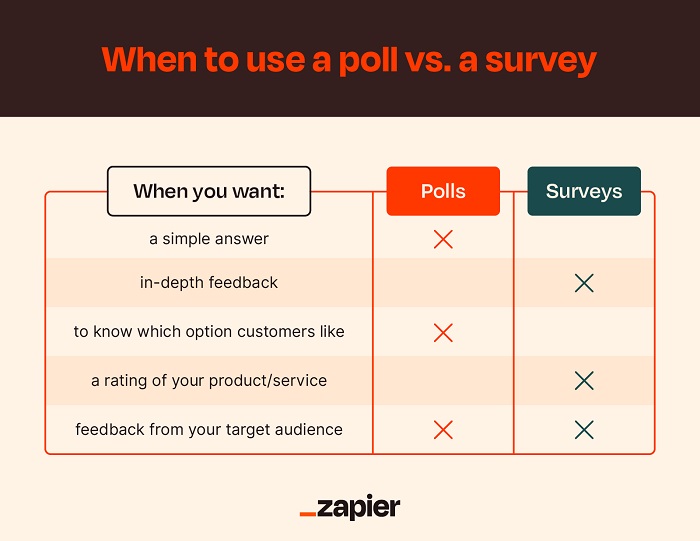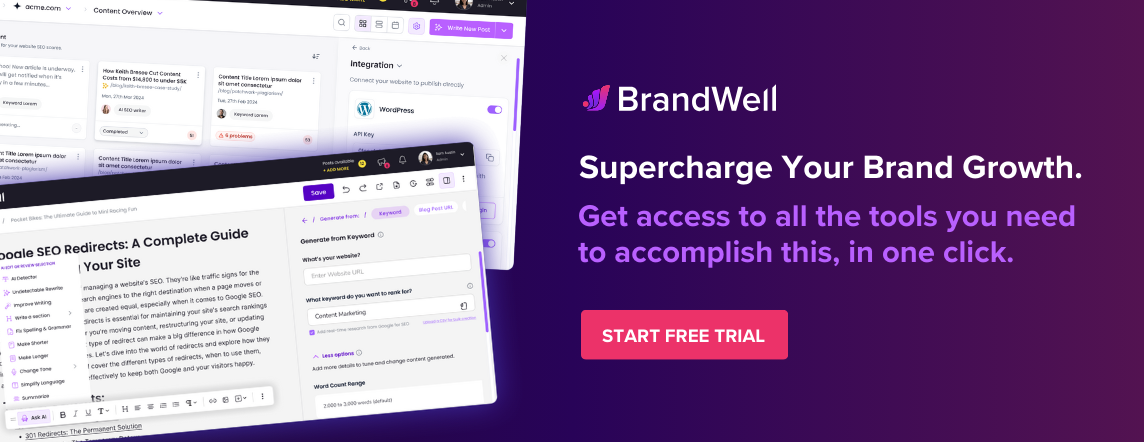Discover top guides, trends, tips and expertise from AIO Writers
How to Analyze Your Audience to Create Targeted Content
Julia McCoy
Monday, 24th Apr 2023
How many times have we seen a marketing campaign fall flat because it didn’t connect with its target audience? Learning how to analyze your audience interest before you create content is the key to a successful marketing plan.
First, what is a target audience and how is it different from a target market?
A target audience refers to the people who will actually consume your product or service. This could include existing customers as well as potential new ones.
It is important to understand who these people are so you can tailor your message to them. Knowing their interests, needs, and wants will help you craft a message that speaks directly to them and encourages them to take action.
On the other hand, a target market is made up of those same individuals but also includes other demographic groups that may have an interest in what you offer such as influencers or industry experts.
Knowing the interests of both your target audience and target market ensures that all your marketing campaigns reach them effectively.
This blog post will provide you with valuable insights on how to analyze your audience interest so your messaging resonates with the right people.
You will learn:
- How to analyze audience behavior.
- How to gain insights on your target demographic from social media, surveys, and polls.
- How to track engagement metrics to measure the success of your content and refine your approach based on data-driven results.
By mastering these techniques, you can tailor your brand communications to your target audience and not waste resources on leads that don’t convert.
Table Of Contents:
- What is Audience Analysis?
- Types of Audiences
- How to Analyze Your Audience Interest and Create Better Content
- Analyze Your Audience’s Behavior
- Analyze Other Brands
- Leverage Social Media Insights
- Run Surveys and Polls
- Track Engagement Metrics
- Conclusion
What is Audience Analysis?
Audience analysis involves the systematic gathering and interpretation of brands’ audience information. This process creates audience segments based on their common traits. By conducting a thorough audience analysis, you can present content marketing ideas that are tailored to your specific audiences’ needs and interests.
This method helps brands identify content opportunities by identifying common user questions or concerns related to their products or services. It also aids in keyword research for SEO purposes and provides social insights from various social platforms about people’s online behaviors.
Analyzing audience interest begins with knowing exactly who you serve and what they want.
Types of Audiences
There are different types of audiences. Some may be hesitant to alter their mindset and require compelling logical arguments to persuade them. On the other hand, there could be willing volunteers who readily embrace new ideas and are prepared to take the desired action. Additionally, there might be influential decision-makers within a group who can effectively navigate distractions and ensure that commitments are fulfilled.
Here are four of the most common types of target audiences:
The Hostile Audience
These are individuals or groups that begin with a strong opposition to your message. Convincing this audience is particularly challenging as they may have preconceived notions, disagreements on ideology, or past negative experiences influencing their stance.
To engage them effectively, you must acknowledge their perspective, present evidence with clear logic and credibility, find common ground where possible, and deliver messages respectfully.
The Friendly Audience
This group already holds views similar to yours or has a positive disposition towards your brand. They can be powerful allies because of shared interests, values, or beliefs which make them receptive to further persuasion and mobilization.
When addressing friendly audiences, leveraging these shared connections can reinforce commitment; it’s also an opportunity for deeper engagement by introducing new ideas that resonate well within the framework of existing mutual understandings.
The Apathetic Audience
Apathetic audiences lack interest in your topic due to perceived irrelevance to their personal lives or simply indifference stemming from information overload in other areas of interest.
To capture the attention of an apathetic audience, you should make your message more relatable by connecting it directly to something they value. Spark curiosity through thought-provoking questions or startling facts might ignite engagement, leading to increased concern about your subject matter.
The Uninformed Audience
These individuals are eager to learn about your topic. Their current knowledge may be quite rudimentary, and they seek to expand it. They need an instructor who can explain the topic in simple, accessible language.
To address this audience, start by finding out what they already know and begin with basic illustrations and use cases. Invest time in educating them before asking for any form of action on their part. Steer clear of specialized terminology or complex phrases that could overwhelm this segment of your audience.
Remember, it’s not just about identifying the interests of your audience but also how to present content in a way that resonates with them. By understanding different types of audiences and tailoring your approach accordingly, you can maximize engagement and conversion rates.
How to Analyze Your Audience Interest and Create Better Content
Whether you are writing content from scratch or asking AI to do it, you should know first who you’re writing for.
What topics, trends, and conversations are most pertinent to your target audience?
Here are five tips for identifying your audience’s interests.
- Analyze your existing audience: Look at their demographics such as age, gender, and location as well as their behavior on social media. This will give you an idea of who your current audience is and what kind of content appeals to them.
- Research your competitors’ content strategies: Take a look at what kind of content your competitors are producing and see if there are any common themes. This can give you an idea of which topics may be popular in the industry and could be worth exploring.
- Conduct surveys and interviews: Ask potential customers direct questions about their preferences for consuming information online (e-books vs blog posts vs videos, for instance).
- Monitor social media: Keep track of trending hashtags on social media platforms so you know which topics people are talking about right now.
- Listen to your customers: Pay attention to feedback customers leave after buying something from you. This could include reviews left on websites such as Amazon or Yelp and comments made on your blog or social media channels.
Let’s explore these audience analysis methods in detail in the following sections.

Definition from Search Engine Journal
Analyze Your Audience’s Behavior
Analyzing your audience’s behavior is a key part of creating an effective content strategy. By taking into account how they engage with your content, you can craft it to suit their requirements and preferences.
Look at your website visits, page views, click-through rates (CTRs), and conversions to see which topics and formats are most popular with your audience. By analyzing these metrics, you can gain insight into which content works best with your target audience and create more of it.
Keep up with industry news and changes in consumer preferences so that you know what kind of content is currently popular among your target demographic. You may even want to consider using AI-powered tools such as Google Trends or BuzzSumo which monitor web traffic patterns. This way you can make informed decisions on when/where/how much effort to invest in a particular content marketing campaign for maximum impact.
By studying the behavior of your audience, you can create more engaging content and optimize your SEO efforts to better reach them. Now let’s look at how audience behavior outside of your website or blog — particularly on social media where you can get a clearer picture of the interests of your potential customers.
Analyze Other Brands
To gather your brand’s audience information, it’s beneficial to look beyond the confines of your own website and conduct an audience analysis of other similar brands or competitors. This involves gathering demographics data keyword research, as well as psychographics – essentially collecting a wealth of insights that can aid in identifying common user questions and content opportunities.
A useful tool for this type of analysis is Quantcast. It compiles insights on purchase behaviors, occupations, device usage, demographics, and domain affinity among others.
Another good resource is Audiense.com, which constructs highly targeted audiences based on eight different criteria:
- Demographics
- Relationships
- Behavior (activity)
- Conversations
- IBM Watson Personality Insights
- Location
- Interests
- Twitter Profile
Leverage Social Media Insights
Social media platforms offer great insights into how people engage with brands online. Monitor comments, shares, likes, and retweets – all these activities provide valuable information about what types of content resonate with users and which don’t.
1. Monitor Conversations
Keep an eye on conversations happening across various social networks related to your industry or niche. This will help you get an idea of what topics people are discussing, as well as which ones they’re most passionate about. Track interactions between industry leaders and their audience to discern which material they find most compelling.
2. Follow Hashtags
Hashtags organize social media posts into categories related to specific subjects or ideas. By analyzing popular hashtags in your industry, you can quickly identify key topics that people care about and incorporate those into your content marketing efforts.
3. Use Social Listening Tools
Social listening tools like Hootsuite or Sprout Social allow you to track engagement across multiple channels in real-time. These tools can provide invaluable data such as sentiment analysis, keyword tracking, and topic discovery which can help inform decisions regarding content creation and promotion strategies.



Screenshot from Sprout Social
4. Track Competitors
Keeping tabs on competitors’ activities is another great way of understanding the interests of your target audience better. Observe what kind of content they’re creating and how they’re engaging with their followers.
5. Engage in Conversations
Join forums related to your business or industry, comment on blog posts written by experts in the field, and engage with other users through Twitter chats or Facebook groups. These interactions will provide invaluable insight into how people perceive certain topics and products.
Run Surveys and Polls
Surveys and polls are an effective way to get insights into your target audience’s interests.
Surveys allow you to get feedback from customers directly on what type of content they would like to see more often or if there’s something specific they want your brand to address. Make sure you keep surveys short so that respondents don’t lose interest before completing them and mix multiple-choice queries with open-ended questions for better results.
Survey questions should be tailored to your demographic’s passions. For example, if you are targeting millennials who love fashion trends, then a question about the latest clothing styles would be appropriate. These questions should be straightforward so that respondents don’t have to spend too much time writing a lengthy response.
A/B testing different versions of webpages or email campaigns through surveys and polls can also help marketers ensure their content pieces align with user preferences.



Automate your audience analysis with Zapier
Track Engagement Metrics
Tracking engagement metrics is critical in analyzing audience interest. Measuring page views, CTR, time on page, bounce rate, shares, and likes can help you identify which content is resonating with your audience.
- Page views are a good starting point when evaluating engagement metrics as they tell you how many people visited a particular page or post. A large number of page views reveals that a significant amount of people have encountered the content and could possibly take some sort of action.
- Click-through rates measure how many visitors click on a link within the content. This metric helps you determine which pieces of content were most successful at driving action from readers.
- Time-on-page indicates how long visitors stayed on each piece of content. If visitors spend more time reading through blog posts, they are more likely to take action toward the end of the article.
- Bounce rate refers to visitors who left after viewing only one page without taking any other action. If this metric is high, then it could indicate that readers are not interested in what you have to say or found something else to do.
- Shares and likes also provide insight into what type of material appeals to audiences since they show which pieces were shared across social media platforms and liked by followers.
Monitoring engagement metrics is essential in determining what type of content is most well-received by your target audience. This will help inform future decisions about which topics should be covered to maximize reader interest and generate maximum return on investment from each campaign.
Conclusion
The best way to analyze your audience’s interest is by taking a holistic approach. Analyze their behavior when they are reading your blog posts or navigating your website, watch how they interact within your niche on social media, and run surveys and polls to get direct feedback.
All of these tactics are designed to give you an accurate picture of what interests your target audience so you can create content that resonates with them and spurs them into action.
Once you have an idea of who your target audience is and what makes them tick, you can guide your human or AI writer into creating content that is tailored to this persona.
Ready to scale your content and meet your audience’s needs? Sign up for BrandWell today.

UNLOCK YOUR POTENTIAL
Long Headline that highlights Value Proposition of Lead Magnet
Grab a front row seat to our video masterclasses, interviews, case studies, tutorials, and guides.



